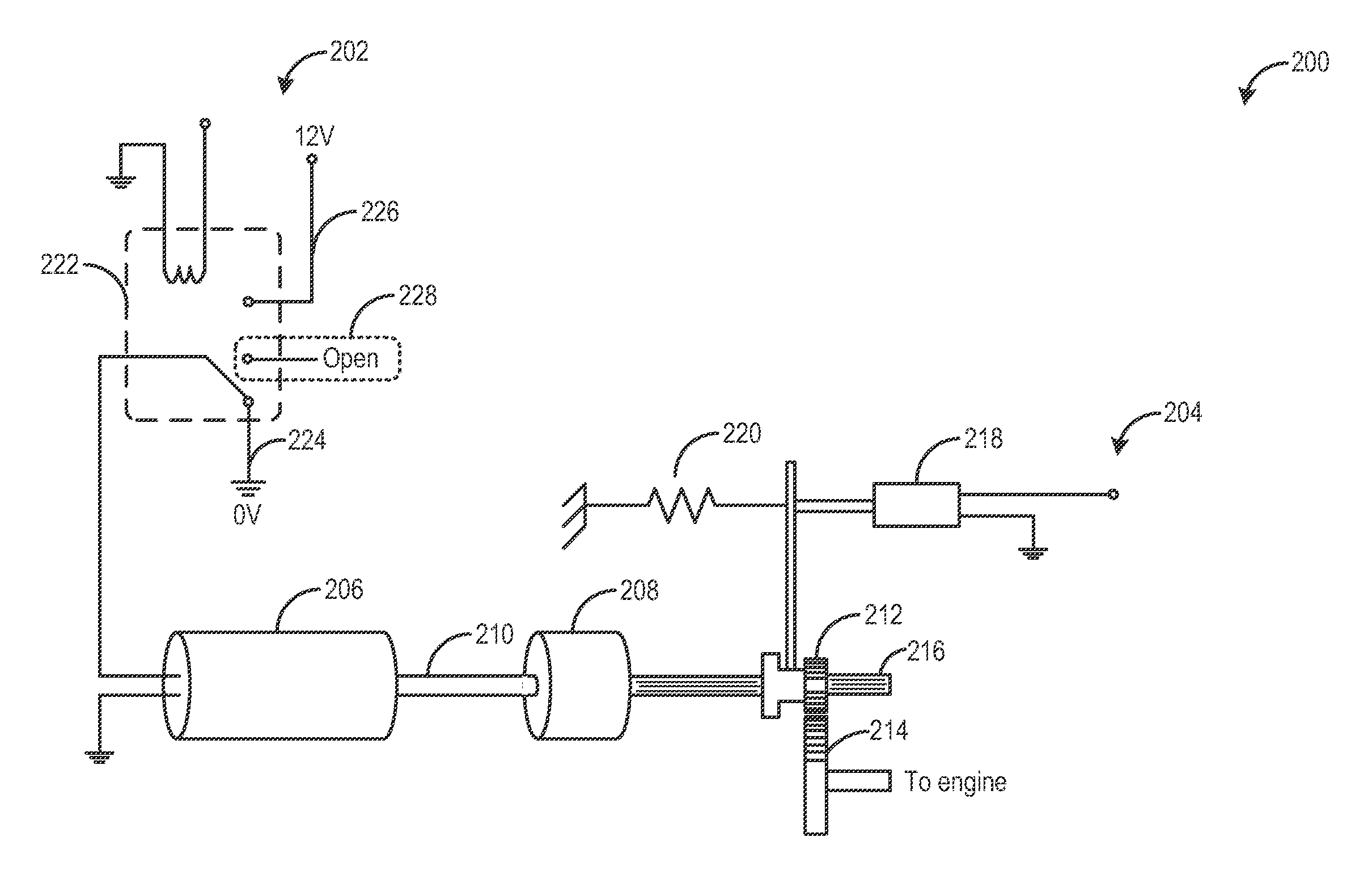Methods and systems for assisted direct start control
a technology of assisted direct start and start control, which is applied in the direction of electric motor starters, machines/engines, engine starters, etc., can solve the problems of shutdown shake and audible noise, increase the restart time, and degrade the quality of the restart operation, so as to reduce noise, reduce exhaust emissions, and save fuel
- Summary
- Abstract
- Description
- Claims
- Application Information
AI Technical Summary
Benefits of technology
Problems solved by technology
Method used
Image
Examples
Embodiment Construction
[0017]The following description relates to systems and methods for expediting engine spin-down and reducing reverse rotation during an engine idle-stop. As shown in FIGS. 1-2, an engine starting system may be configured with a starter motor and a starter gear train. During an idle-stop operation, a starter gear may be engaged to the spinning engine to reduce engine reversals and expedite engine spin-down. Further, engine reverse rotation may be substantially stopped via a one-way clutch in the starter. Based on engine operating conditions, a starter motor switch, such as a starter motor relay, may be adjusted to apply an additional starter braking torque to further assist engine spin-down and reduce acceleration delays during subsequent engine restarts. The starter gear engagement and starter braking torque may enable the engine speed to be rapidly lowered to at least a predetermined starter threshold speed (or to rest) wherefrom an engine restart may rapidly ensue. A controller may...
PUM
 Login to View More
Login to View More Abstract
Description
Claims
Application Information
 Login to View More
Login to View More - R&D
- Intellectual Property
- Life Sciences
- Materials
- Tech Scout
- Unparalleled Data Quality
- Higher Quality Content
- 60% Fewer Hallucinations
Browse by: Latest US Patents, China's latest patents, Technical Efficacy Thesaurus, Application Domain, Technology Topic, Popular Technical Reports.
© 2025 PatSnap. All rights reserved.Legal|Privacy policy|Modern Slavery Act Transparency Statement|Sitemap|About US| Contact US: help@patsnap.com



